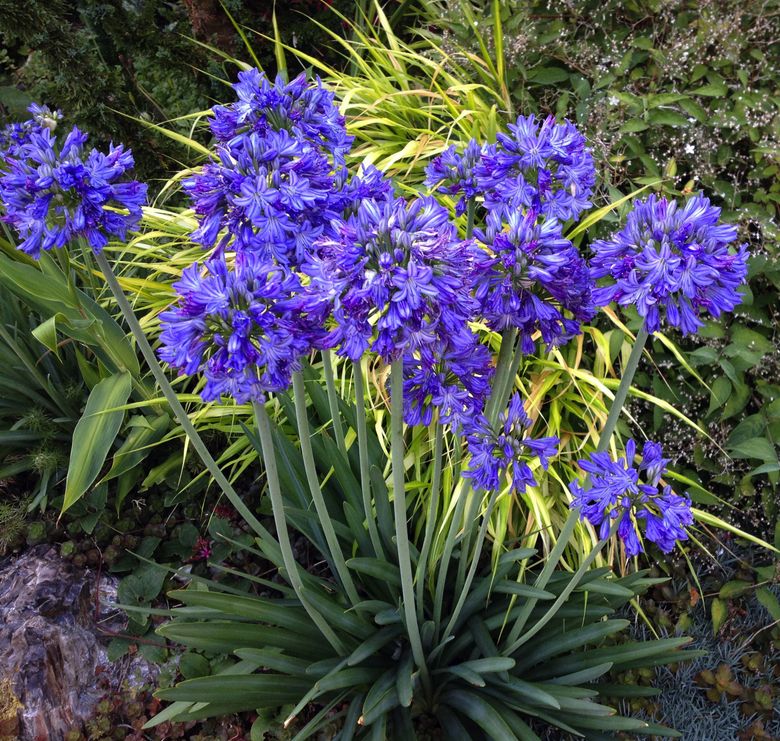Seasonal Agapanthus Care: Getting Ready For Wintertime and Summertime
Unleashing the Secret to Effective Agapanthus Cultivation: Idea for a Flourishing Yard
In the world of horticulture, cultivating agapanthus effectively needs a calculated approach that incorporates numerous facets of plant treatment. By understanding the subtleties of agapanthus growing, one can create an atmosphere where these plants flourish and flower perfectly.
Growing Agapanthus: Best Practices
When growing Agapanthus, proper dirt preparation is crucial for ensuring successful development and advancement of these gorgeous blossoms. Agapanthus, frequently referred to as Lily of the Nile or African lily, flourishes in well-draining dirt with a somewhat acidic to neutral pH level - Agapanthus. Prior to growing, it is vital to modify heavy clay dirts with raw material such as compost or peat moss to boost water drainage and offer necessary nutrients for the plants
To plant Agapanthus, select a location that obtains complete sunshine to partial shade, as this will advertise healthy and balanced growth and bountiful flowering. Dig a hole twice the size of the plant's origin ball and position the Agapanthus at the same deepness it was formerly growing. Carefully backfill the hole with soil, pushing down strongly to get rid of any air pockets around the origins.
Water the freshly grown Agapanthus extensively and remain to keep the dirt uniformly wet, especially during the plant's active growing period. Agapanthus. Using a well balanced plant food once a month can better support the plant's development and flowering. By complying with these ideal practices for growing Agapanthus, you can develop a magnificent display screen of these exciting flowers in your garden
Suitable Dirt Issues for Agapanthus
For optimal growth and flowering success of Agapanthus plants, ensuring the dirt conditions are ideal is important. Agapanthus likes soil that is rich in nutrients, so including a balanced fertilizer throughout the growing season can promote healthy growth and vibrant flowers.

Watering and Fertilizing Tips
To make sure healthy and balanced development and lively flowers, proper watering and feeding techniques are crucial for effective Agapanthus growing. Agapanthus plants profit from routine watering, specifically throughout the growing period.
When it comes to fertilizing Agapanthus, a balanced fertilizer with equal parts nitrogen, phosphorus, and potassium can be used in the spring to advertise healthy development and flowering. Slow-release fertilizers are excellent for supplying nutrients gradually over an extensive period. Stay clear of over-fertilizing, as this can bring about extreme vegetation growth at the expenditure of flowers.
In addition, integrating raw material like compost right into the soil can improve nutrient levels and improve soil structure, assisting in the general wellness of the Agapanthus plants. By complying with these watering and feeding suggestions, garden enthusiasts can ensure their Agapanthus plants grow and create stunning displays of flowers.
Pruning and Deadheading Strategies
Proper trimming and deadheading techniques play an important duty in preserving the health and wellness and aesthetic appeals of Agapanthus plants, enhancing the important this hyperlink methods of watering and feeding for successful cultivation. Pruning Agapanthus includes getting rid of spent flower heads, yellowing or dead leaves, and total shaping of the plant to promote much better development. Deadheading, the process of removing faded flowers, not only boosts the plant's look but likewise urges more blooming.
When deadheading Agapanthus, it is a good idea to trim off the flower stem at the base using sharp, tidy shears. This procedure redirects the plant's energy from seed production back right into root and foliage development, advertising a healthier and more robust plant. Regular deadheading can prolong the growing duration of Agapanthus and prevent self-seeding, which can cause congestion.
In regards to trimming, Agapanthus usually benefits from a light trim after blossoming to clean up the plant and motivate fresh growth. Cutting down the invested flower use this link stems and eliminating any broken or dead vegetation aids preserve the plant's vigor and overall appearance. Nonetheless, it is necessary to prevent reducing into the crown of the plant, as this can weaken its health.

Protecting Agapanthus From Pests and Diseases
Carrying out effective parasite and disease management strategies is vital to securing the health and wellness and vigor of Agapanthus plants in cultivation. One common insect that affects Agapanthus is the Agapanthus borer, a caterpillar that passages into the plant, triggering damage to the fallen leaves and flowers.
In enhancement to bugs, Agapanthus are susceptible to illness such as origin rot and fungal fallen leave areas. By staying vigilant and attending to insect and illness issues immediately, gardeners can aid their Agapanthus prosper and prosper.

Conclusion
To conclude, successful cultivation of agapanthus requires correct growing methods, optimal soil problems, appropriate watering and fertilizing, regular trimming and deadheading, and security from illness and insects. By complying with these methods and tips, gardeners can make sure a growing yard full of gorgeous agapanthus have a peek at this site flowers. Agapanthus. Bear in mind to preserve constant treatment and focus to detail to promote the health and wellness and long life of these sensational plants
When planting Agapanthus, proper dirt prep work is necessary for ensuring effective growth and development of these gorgeous flowers.Water the freshly grown Agapanthus extensively and proceed to maintain the dirt evenly moist, especially during the plant's energetic expanding period.For optimal growth and blooming success of Agapanthus plants, making sure the dirt problems are ideal is crucial. When planting or hair transplanting Agapanthus, ensure the soil is well-prepared to give the needed structure for the plants to develop themselves effectively. One common parasite that influences Agapanthus is the Agapanthus borer, a caterpillar that passages right into the plant, creating damage to the fallen leaves and flowers.